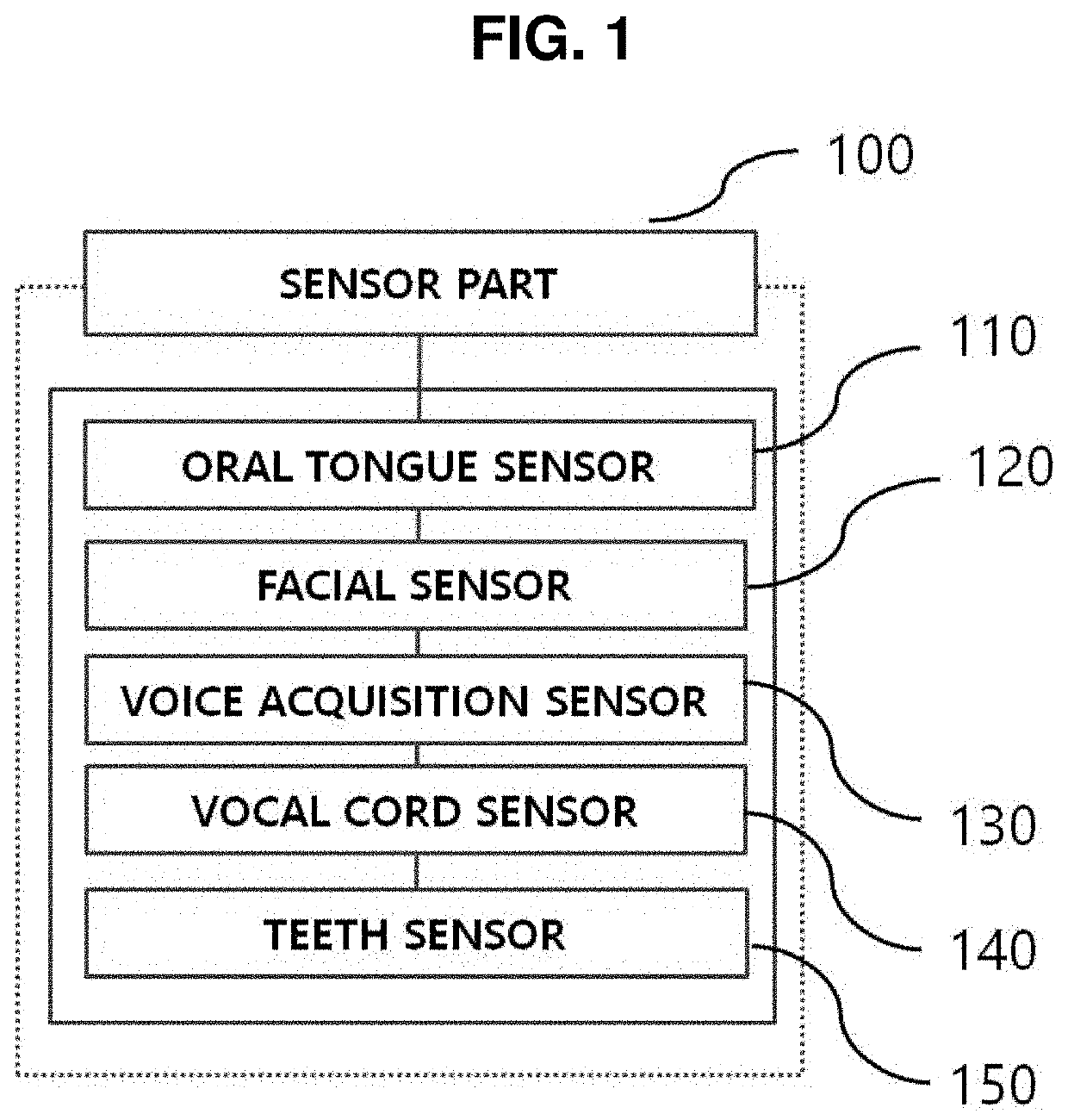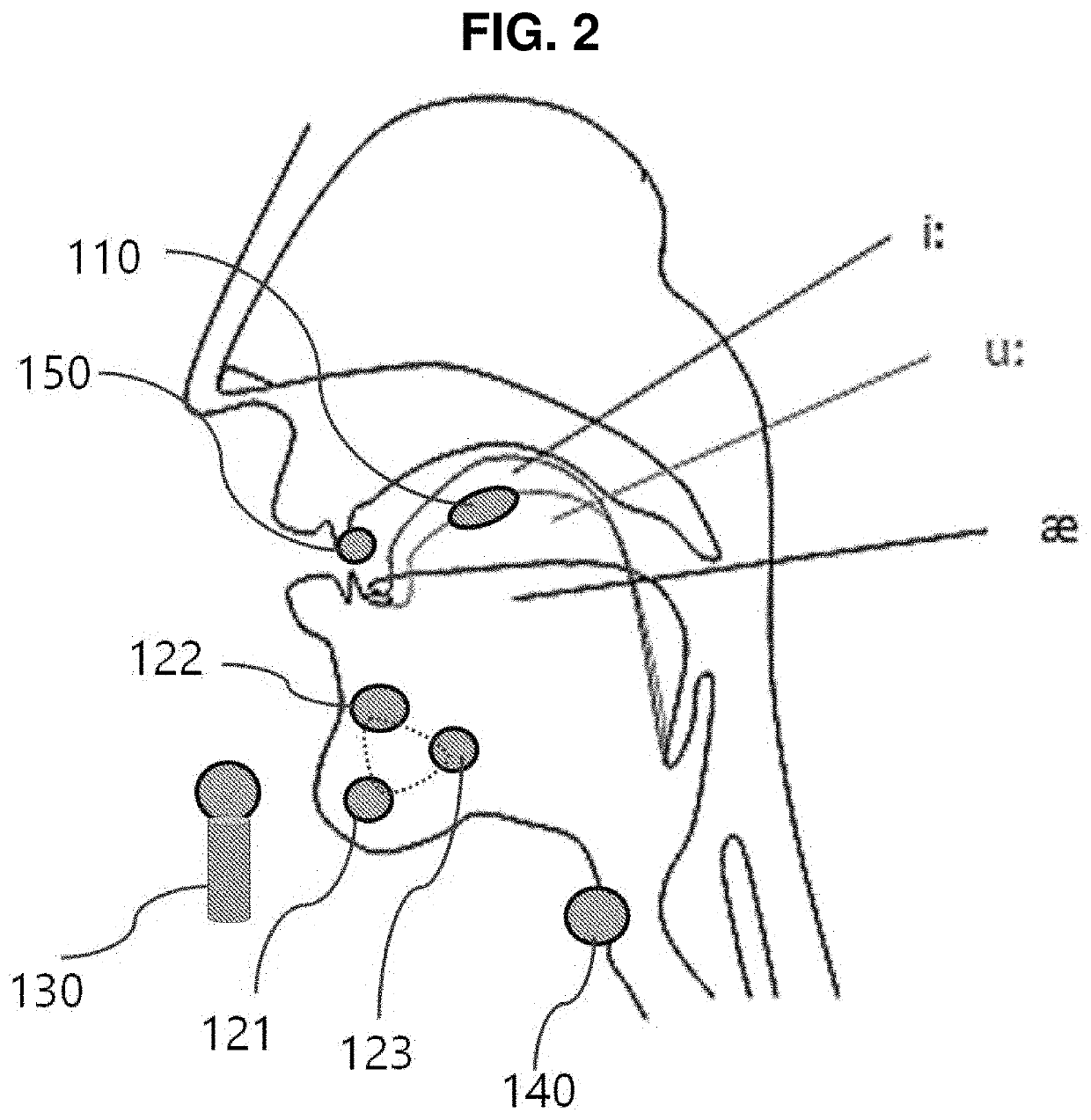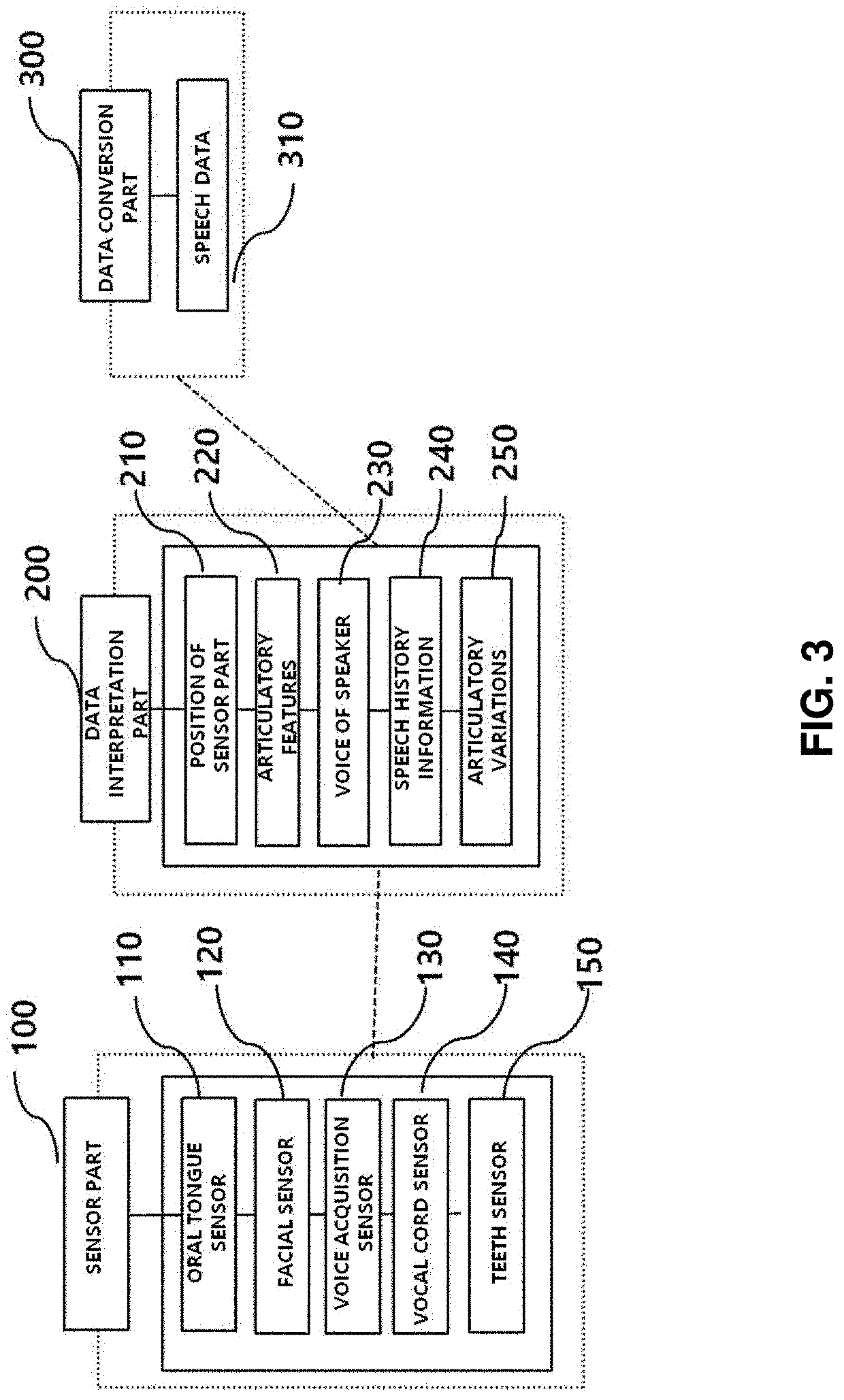Speech intention expression system using physical characteristics of head and neck articulator
a technology of speech intention and expression system, which is applied in the field of speech intention expression system using physical characteristics of head and neck articulators, can solve the problems of inability to accurately grasp and implement an intention, difficulty in distinguishing tongue parts, and poor treatment, and achieves accurate grasping and implementing an intention, good quality phonation, and low speech quality
- Summary
- Abstract
- Description
- Claims
- Application Information
AI Technical Summary
Benefits of technology
Problems solved by technology
Method used
Image
Examples
first embodiment
[0147]As illustrated in FIGS. 1, 2, and 3, in the speech intention expression system according to the present invention, a sensor part 100 includes an oral tongue sensor 110, facial sensors 120, a voice acquisition sensor 130, a vocal cord sensor 140, and a teeth sensor 150 which are located in the head and neck.
[0148]More specifically, the oral tongue sensor 110, the facial sensors 120, the voice acquisition sensor 130, the vocal cord sensor 140, and the teeth sensor 150, which are located in the head and neck, provide data related to a sensor part position 210 at which each sensor is disposed, articulatory features 220 according to speech of a speaker 10, a speaker's voice 230, speech history information 240, and articulatory variations 250.
[0149]A data interpretation part 200 acquires such pieces of data, and a data conversion part 300 processes such pieces of data as speech data 310.
[0150]FIG. 4 is a view illustrating names of areas of the oral tongue utilized in the speech inte...
second embodiment
[0165]FIG. 15 is a view illustrating a speech intention expression system according to the present invention.
[0166]As illustrated in FIG. 15, in the speech intention expression system according to the second embodiment of the present invention, a sensor part 100 in the vicinity of head and neck articulators that includes an oral tongue sensor 110, facial sensors 120, a voice acquisition sensor 130, a vocal cord sensor 140, and a teeth sensor150 grasps a sensor part position 210 at which each sensor is disposed, articulatory features 220 according to speech, a speaker's voice 230 according to speech, and speech history information 240 including a start of speech, a pause of speech, and an end of speech.
[0167]In this case, the articulatory features 220 refer to one or more fundamental physical articulatory features among a stop-plosive sound, a fricative sound, an affricative sound, a nasal sound, a liquid sound, a glide, a sibilance, a voiced / voiceless sound, and a glottal sound. Als...
third embodiment
[0200]FIG. 32 is a view illustrating a speech intention expression system according to the present invention.
[0201]As illustrated in FIG. 32, the speech intention expression system includes a communication part 400 which is capable of, when one or more of the data interpretation part 200 and a data expression part 500 (see FIG. 34) operate while being disposed outside, communicating in linkage with the data interpretation part 200 and the data expression part 500. The communication part 400 may be implemented in a wired or wireless manner, and, in the case of the wireless communication part 400, various methods such as Bluetooth, Wi-Fi, third generation (3G) communication, fourth generation (4G) communication, and near-field communication (NFC) may be used.
[0202]FIGS. 33 and 34 are views illustrating actual forms of a database part of the speech intention expression system according to the third embodiment of the present invention.
[0203]As illustrated in FIGS. 33 and 34, the databas...
PUM
 Login to View More
Login to View More Abstract
Description
Claims
Application Information
 Login to View More
Login to View More - R&D
- Intellectual Property
- Life Sciences
- Materials
- Tech Scout
- Unparalleled Data Quality
- Higher Quality Content
- 60% Fewer Hallucinations
Browse by: Latest US Patents, China's latest patents, Technical Efficacy Thesaurus, Application Domain, Technology Topic, Popular Technical Reports.
© 2025 PatSnap. All rights reserved.Legal|Privacy policy|Modern Slavery Act Transparency Statement|Sitemap|About US| Contact US: help@patsnap.com



